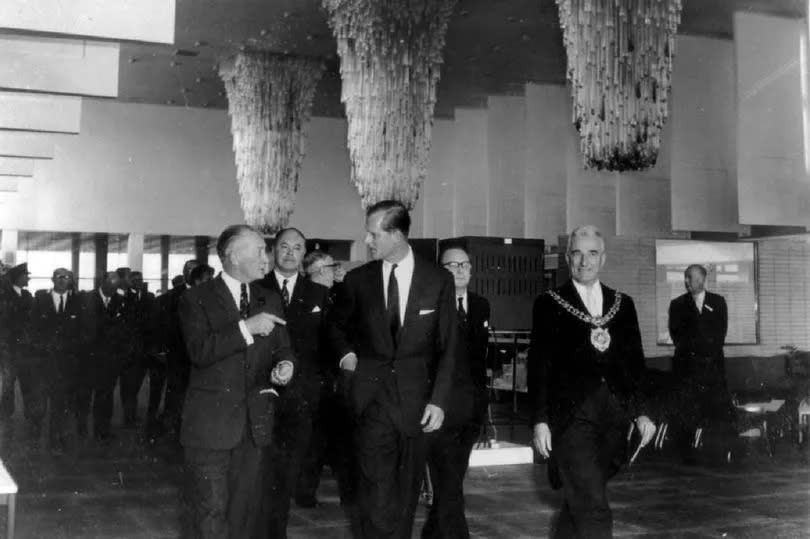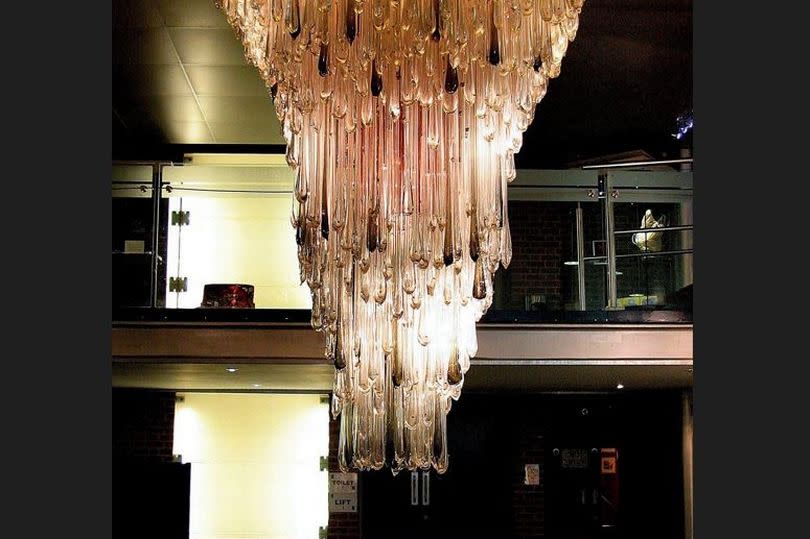The glitzy piece of Manchester Airport's past set to shine again

An iconic part of Manchester Airport's past is being reimagined for the future - with the help of eager young minds.
A favourite focal point of family holidays for more than four decades, grand Venetian chandeliers graced the airport's Terminal 1 departures hall, each one weighing a staggering two tonnes.
The Italian-designed chandeliers, unveiled when the late Prince Philip opened the terminal in October, 1962, were taken down in 2003 under modernisation work at the terminal.
READ MORE: 'Afro-Asda': The UK's first Afro-Caribbean supermarket, unpacked
One is now on display at the World of Glass Museum in St Helen's, with a second at the Museum of Science and Industry in Manchester. A thirds has been kept in storage at the airport. Now it's been revealed one of the chandeliers will shine again, albeit in a different guise.
The airport is working with students from the Manchester School of Architecture and a specialist sculptor, Liam Hopkins from the Denton-based Lazerian studio, to transform the chandelier into a new piece of public art to be displayed in the new T2 departures lounge.
People who live in, and travel from Manchester, are being asked to share their thoughts with the students to help inspire the final project. A questionnaire has been launched to help shape the final design.

Liam, who has commissioned art installations across Greater Manchester and the country, said: "I am thrilled to embark on this collaborative journey with Manchester Airport and the Manchester School of Architecture to breathe new life into the beloved glass chandeliers that have long been an emblem of the airport's identity.
"Guiding the students from the Manchester School of Architecture is both an honour and a stimulating challenge. Together, we are committed to fostering social impact and community benefit through our efforts. I eagerly anticipate witnessing the innovative solutions and creative visions we will bring to fruition, destined to adorn the newly redesigned departure hall of Terminal 2."
Emily Crompton, Senior Lecturer at Manchester School of Architecture, said: “Manchester School of Architecture is excited to be collaborating with Manchester Airport on their project to re-imagine the iconic glass chandeliers from Terminal 1.
"As part of MSA LIVE, an annual programme of live projects which sees architecture students working on real life projects with an external client, this project will see a group of 15 students working alongside an artist to design a new installation for the terminal using the original glass from the chandeliers.
"Their design work will be viewed by the thousands of passengers passing through Manchester Airport every day, providing a fantastic opportunity for both the students and airport."

Jill Fraser, Transformation Programme Delivery Director at Manchester Airport, said: "The chandeliers are a huge part of the airport’s identity and it’s so exciting to be able to bring one of them back to life in our new Terminal 2.
"It's especially good to be able to work with local people on the project, including the students at Manchester School of Architecture, Lazerian – and now everyone who fills in this survey.
"Here at Manchester Airport we’re proud to serve the people of the North and how better to represent that than with a piece of art that is not only made out of something that so many people have fond memories of but has also been inspired by the community."
The 17ft chandeliers feature 1,300 piece of crystal between them and were designed by architect Stefan Buzas and hand blown by glass maker Bruno Zanetti at the Venini factory in Murano, Italy, at a cost of £3,000 each.
Their design was altered in 1987 with the coloured glass drops taken out and they were moved from the centre of the departure hall to the side, before later being cleaned of nicotine stains and dust by a team of 16 men.

 Yahoo News
Yahoo News 
